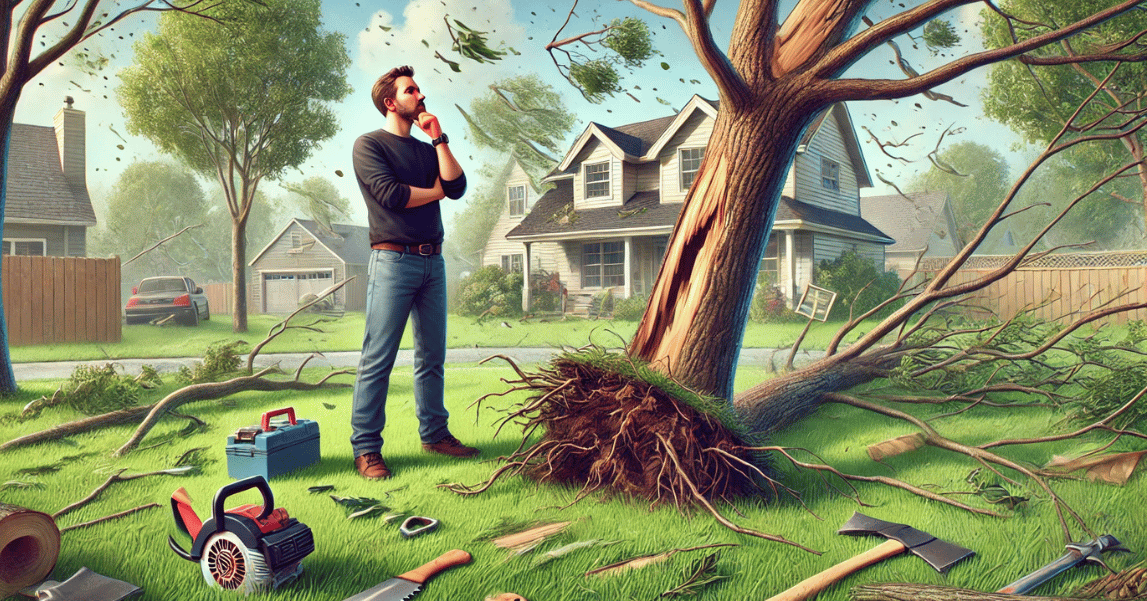If you have a tree on your property that you're concerned about protecting, you're not alone. Trees not only enhance the aesthetics of your home but also contribute significantly to its overall value.
Studies indicate that homes with trees can be worth anywhere from 3.5% to 15% more than those without.
However, despite the many benefits trees offer, most homeowners need help to safeguard these natural assets from potential threats and predators. In this article, we will explore the importance of tree protection and provide you with valuable insights on how to get started on the path to preserving and nurturing your cherished trees.
The Importance of Tree Protection
Trees play a crucial role in the environment. They provide oxygen, improve air quality, offer shade, and serve as habitats for countless wildlife species. Protecting trees is essential for several reasons:
1. Environmental Benefits: Trees absorb carbon dioxide and release oxygen, helping combat climate change and improve air quality.
2. Aesthetic Value: Trees enhance the beauty of our landscapes, making them more inviting and appealing.
3. Economic Value: Well-maintained trees can increase property values and attract businesses and tourists.
4. Wildlife Habitat: Trees provide shelter and food for birds, insects, and mammals.
5. Human Health: Trees offer shade, reduce stress, and create a sense of well-being.
To ensure that these benefits are preserved for current and future generations, it's vital to employ tree protection methods.
Tree Protection Methods
1. Fencing
Tree protection fencing is a simple yet highly effective method. It involves creating a physical barrier around the tree to prevent damage from human or animal interference. This is particularly important during construction projects, as it shields the tree from equipment, foot traffic, and debris. Fencing also discourages pets from digging around the tree, which can harm its root system.

2. Tree Shelters
Tree shelters are translucent plastic tubes that are placed around young trees. They serve several purposes, including protecting the tree from animals, wind, and harsh weather. These shelters create a microenvironment that promotes healthy growth and reduces stress on the tree. Tree shelters are especially beneficial for newly planted trees.

3. Tree Guards
Tree guards are similar to tree shelters but are usually shorter and open at the top. They are often used to protect the lower trunk of trees from mechanical damage, such as lawnmowers and trimmers. Tree guards are a practical and cost-effective solution to shield young trees in urban environments.

4. Chemical Repellent
Chemical repellents can be used to deter animals from damaging trees. These repellents emit odors or tastes that animals find unpleasant, dissuading them from chewing on the tree's bark or leaves. While chemical repellents can be effective, they must be reapplied regularly. They may not be suitable for all situations, especially in residential areas where people may find the odor unpleasant.

5. Diversionary Feeding
In some cases, mainly when dealing with wildlife inclined to damage trees for food, diversionary feeding can be a helpful strategy. This involves providing an alternative food source to deter animals from foraging on trees. For example, setting up bird feeders or planting specific plants that animals prefer can help protect trees by diverting wildlife's attention away from them.

When to Implement Tree Protection
- Construction Projects: If you're planning construction or landscaping work near trees, it's crucial to implement tree protection measures to prevent damage to their roots and branches.
- New Plantings: Young trees are particularly vulnerable to damage from animals and harsh weather. Using tree shelters or guards can help them establish robust root systems.
- Urban Environments: Trees in urban settings often face challenges like vandalism, pollution, and damage from maintenance equipment. Tree protection methods are essential in these areas.
- Wildlife Concerns: If you're dealing with wildlife that might harm your trees, like deer or rabbits, consider using chemical repellents or diversionary feeding to protect your trees.
- Year-round: Tree protection is not a one-time effort. It should be ongoing, especially for valuable or mature trees. Regular inspections and maintenance are essential.
Choosing the Right Tree Protection Method
The choice of tree protection method depends on various factors, including the type of tree, its age, the specific threats it faces, and your budget. It's crucial to assess the situation carefully and, when in doubt, seek advice from a professional tree service like Strobert Tree Services.
Tree Protection Cost
The cost of tree protection varies depending on the methods and types required. Here are some factors that can influence the price:
- Tree Size: Larger trees typically require more extensive protection measures, which can increase costs.
- Tree Health: Unhealthy trees may need more intensive care, which can be costlier.
- Type of Protection: The method and type of protection required will impact the overall cost. For example, constructing protective barriers during construction can be more expensive than regular pruning.
- Frequency: Regular maintenance, such as pruning, maybe an ongoing cost, while one-time measures like installing support systems are a single expense.
To determine the specific cost of tree protection for your property and trees, it's best to consult with a professional arborist or tree service company. They can assess your trees' needs and provide an accurate estimate.
Contact Strobert Tree Services
At Strobert Tree Services, we understand the importance of tree protection. Our team of experts is dedicated to preserving the health and beauty of your trees. Whether you need pruning, pest control, or support systems, we have the knowledge and experience to safeguard your trees.
Contact us today to discuss your tree protection needs and receive a personalized quote. We are leaders in tree healthcare in Delaware, Pennsylvania, Maryland, and New Jersey, and we're here to help you protect your valuable trees.











